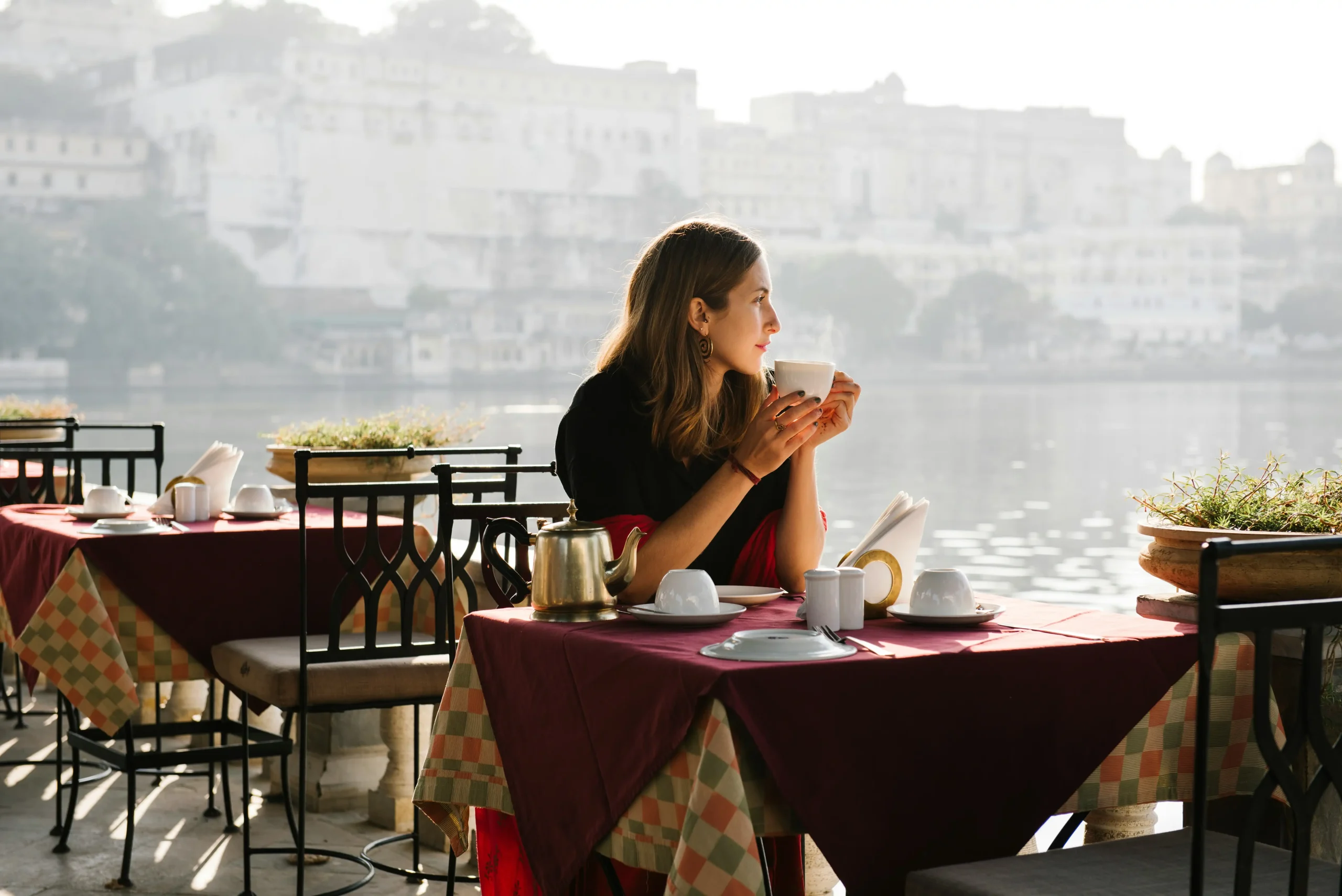Andalusia is a southern region of Spain famous for its sunshine as many as 320 days a year, and temperatures rarely drop below 20 degrees. In the summer, it is a popular destination for tourists mainly because a 70-kilometer coastline known as the Costa Tropical stretches along it. However, when the tourist season passes, the region still continues to delight and has a variety of attractions to offer: flamenco, corrida and a whole host of charming towns hidden in the rocks. So Andalusia in November is a really good idea if you want to see it all without wading through a crowd of tourists.
Table of Contents:
- The remarkable history of Andalusia
- Córdoba – the cultural cradle of Spain
- Muslim influence in the Iberian Peninsula
- Multicultural influences
- From Seville to Granada
- Flamenco, tapas and corrida
- Cadiz – Spain’s oldest city
- Spain’s wine capital
- Cities hidden in the rocks
- Beautifully located Roundabout
- A night walk in Malaga
- To Gibraltar one step
- Tarifa – Spain’s kitesurfing capital
- Andalusia in November – is it worth it?
The remarkable history of Andalusia
Because of its location, Andalusia has been an important trading region for centuries. There were also numerous ports there from which to move on, including. To Africa. It is from there that you can see Morocco, and the entire Arab culture has had an undoubted influence on what it looks like today and the customs there. Over hundreds of years, Andalusia has become a place through which many wars and cultures have passed. The Romans were the first to take over this part, only to hand it over to the Visigothic Kingdom in the 5th century. By then, Roman and Byzantine culture had already begun to mix there, as can be seen, for example, in Cordoba.
Editors recommend: the best movies for autumn evenings: women’s recommendations!
Córdoba – the cultural cradle of Spain
Córdoba itself is still considered one of the most important cities in the world today because of its history. In the Middle Ages, it was the largest and most populous city in the world, which also stood out for its architecture and economic development. It was even centuries ahead of any other city. All this is due to various cultural influences. Since the 8th century, the city was under the strong rule of the Caliphate, becoming the heart of Muslim culture in Europe. This resulted in some of the most beautiful monuments that remain today, including La Mezquita Catedral. This remarkable building is the largest mosque in Europe, which was turned into a church over time. Just the influence of Islam, Christianity and Judaism can be seen here at every turn.
Muslim influence in the Iberian Peninsula
Before that happened, however, the Muslims left a distinct footprint there. Córdoba’s architecture is very different from other European cities. The predominant colors here are white, blue and gold. The windows have shutters, and the buildings themselves have rounded arches. The courtyards of the houses are often green, and there are small fountains in the center that remind us of a trip to the Middle East rather than Europe. It is today that the term “Andalusia” as we know it comes from the word “Al-Andalus,” with which the Moors named the entire Iberian Peninsula.

Multicultural influences
At a time when Andalusia was populated by people of many cultures, there was peace and harmony. In contrast to other European regions, significant cultural and economic development was also taking place there. Every resident had equal rights, including to education. Numerous schools, universities and libraries have been established in Cordoba. Everything began to change after the conquest of the region by Christians, who influenced changes throughout southern Spain.
From Seville to Granada
Andalusia is Spain’s most populous region located in the south of the country. Andalusians are known for their openness and friendliness. They are always smiling and eager to help, and what’s more, one of their customs is to greet every person they meet on the street. They love to spend time together playing chess in local parks, having long conversations or dancing in the street. It is from Andalusia that Spain’s most famous dance, flamenco, originated. A few years ago it was added to UNESCO’s list of Intangible Heritage Sites. It is a very lively dance, and there is a specific story behind each movement. While in the south of Spain, you should undoubtedly go to one of the shows.
Such shows are most often organized in major cities, but during numerous festivals and holidays they are actually held everywhere. In Seville, you can see distinctive dancers dressed in red frilly skirts at the Teatro Flamenco, for example, and the cost of a ticket is about £100.
Flamenco, tapas and corrida
But Seville is not only the capital of flamenco. It is mainly famous for its famous tapas at almost every turn. The word “tapas” itself comes from the Spanish “tapar” and means “to cover.” Numerous cafes and bars offer a variety of snacks for a small fee: tortilla espanola, the famous Iberian ham with wheat sticks, cider-cooked chorizo sausages or paella. Grabbing such snacks, you can easily set out to conquer the city. And there is indeed something to see in Seville. It takes up to 2-3 full days to explore the entire city.
One of the main attractions is the Cathedral of the Blessed Virgin Mary, the largest in the world. It is a perfect example of Gothic architecture and Muslim influence, including the Giralda minaret. Inside are numerous chapels and the tomb of Columbus. In addition, the famous Spanish Square with a canal built around it is also worth seeing there. The tiles used for the plaza are Azulejo, which many may associate with Portugal.

An important attraction in Seville is also the bullfighting arena La Plaza de Toros de la Real Maestranza de Caballería de Sevilla, where shows are still held around Easter. If you are interested in Andalusia in November, then you can go inside and see how the arena is built and see the museum exhibits. One of the most famous is the purple torreador, painted by Picasso himself.
Cadiz – Spain’s oldest city
While in Seville, a trip to Cadiz is worthwhile. It is the oldest city not only in all of Spain, but also in all of Western Europe. Its origins date back to 1100 BC. One of the most beautiful places is the old town, which is very tightly built, with narrow streets and charming old three-story buildings. Without a doubt, you can walk there for hours and still discover new places. From there you can already see the Catedral de Santa Cruz, the most famous building in Cadiz. The cathedral is located right on the Atlantic Ocean, and its massive golden dome, like the water, reflects the sun’s rays amazingly.
In Cadiz, in addition to sightseeing, we can also relax on one of Spain’s most beautiful beaches – Playa de la Victoria. The beach, which stretches for almost 3 kilometers, impresses with its light-colored sand, beautiful views and water temperature that resembles our Baltic Sea in November in summer. So there is no shortage of bathing enthusiasts there at any time of the year.

Spain’s wine capital
Just 30 kilometers from Cadiz is another Andalusian city that is undoubtedly worth seeing. We are referring to Jerez de la Frontera. It is considered the capital of Spanish sherry wine and brandy de Jerez cognac. While there, a trip to one of the local wineries is a must, in order to taste these beverages straight from the barrels. The most famous of these is González-Byass, where there is also a small museum where we will learn about the history and process of wine production.
Read also: Iconic Parisian cafes with a soul
Cities hidden in the rocks
Andalusia in November is also the perfect time if you want to see towns carved into the rocks. The most famous of these, Setenil de las Bodegas in high season, is heavily trafficked and it’s hard to walk through the really narrow passageways. In autumn, you can quietly spend a few hours there and hardly run into any other tourists. The buildings in the city are literally sandwiched between the rocks of the ravine, so they don’t even have roofs. There are railings in many places, as it is quite steep.
This is definitely not a trip for those with a fear of heights and claustrophobia, as the place is different from other rock cities. To go for a walk there, it is advisable to get a good pair of shoes and a jacket, as the rocks also effectively protect you from the sun. While it can be soothing in the summer months, in November it is there, definitely cooler.
Beautifully located Roundabout
Spain’s most famous city perched on the rocks is certainly Ronda. Its location has also made it known as the Eagle’s Nest. The town is divided into two parts, and is separated by the famous El Tajo ravine, which measures about 100 meters. Above it is one of Andalusia’s most famous attractions, the Puente Nuevo, or New Bridge. It is best seen from the Cuenca Gardens, and that’s where the most famous photos on Instagram come from. It may come as a surprise to some that there are also houses on the edge of the bridge that overlook the gorge directly. Nearby there is also a passage directly into the ravine.
However, Ronda is not just a bridge and ravine. It is also famous for its amazing architecture, including the old town and the bullfighting arena. This is the origin of the modern rules of the competition, which was started by Francisco Romero. The main attraction, then, is the 18th century Plaza de Toros.
A night walk in Malaga
An important point on the map of Andalusia that should not be missed is undoubtedly Malaga. It is where one of the most famous painters, Pablo Picasso, was born. In addition to numerous exhibitions and museums where we can admire his works, Malaga has other attractions worth seeing. Different cultures are also intertwined there, so one of them is, for example, the Roman theater or the Alcazaba. It is one of the largest Moorish fortresses located in Spain. Currently, the castle houses a museum where you can learn more about Andalusian culture.
In addition to the old town and numerous monuments, Malaga is also famous for its nightlife. You can enjoy wine and tapas in the numerous pubs along the seafront, and then head to one of the clubs. Málaga is considered to be a university city, hence the parties there are non-stop not only all night, but all year round. It is safe to say that the city does not sleep and without a doubt you can not get bored there.

To Gibraltar one step
While in the south of Spain, it’s also worth visiting… the UK. How is this possible? It is home to an overseas territory – Gibraltar. In theory, English is the official language there and the currency is the British pound, but in reality most residents and workers are of Spanish origin. It is there that the Rock of Gibraltar is located, which can be accessed by lift. However, it should be taken into account that the waiting line can be even more than an hour, and this is in the low season. The mountain offers a view of the entire bay, and it is at the top that the magotes – small monkeys for which tourists from all over the world come to live.
In Gibraltar, you can also take a ride on a double-decker British bus or make a phone call from the famous red telephone booth. To get there, however, you must take your passport with you. Moving between Spain and Gibraltar, we face customs clearance. Right next door is a paid parking lot, where you can easily leave your car.
Tarifa – Spain’s kitesurfing capital
The most beautiful Spanish beaches await those who are not fond of sightseeing, but dream of a little sun and water. One of them is Playa Bologna. The water there is incredibly clear and warm even in autumn. Another plus of visiting in November is that it is practically empty at this time of year. There are numerous sand dunes on the beach, including the largest at nearly 30 meters. Playa Bologna is also a mecca for surfers who come there from all over the world to catch waves.

For enthusiasts of other water sports, including kitesurfing there is quite a treat 20 kilometers away. Tarfia is a small coastal town that has been completely overrun by kitesurfers. The atmosphere of the place is unique and in no other Spanish city we will feel like there. In November, most places are closed, but that’s when you can rent accommodation for up to half the price.
Andalusia in November – is it worth it?
Many people wonder if Andalusia in November is a good idea. The editors of GentleWoman POLAND are definitely in favor! Diversity of cultures, plenty of attractions, delicious food and lots of sunshine – this is the easiest way to describe the region. And in autumn there is an added plus: far fewer tourists.
Editorial recommends: Mexico City – explore the fascinating city of culture and art





